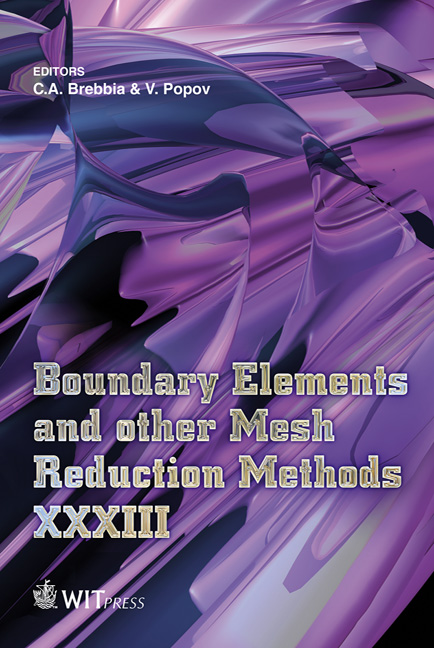Calculation Of Propeller’s Load Noise Using LES And BEM Numerical Acoustics Coupling Methods
Price
Free (open access)
Transaction
Volume
52
Pages
13
Page Range
85 - 97
Published
2011
Size
1,821 kb
Paper DOI
10.2495/BE110081
Copyright
WIT Press
Author(s)
Q. Yang, Y. Wang & M. Zhang
Abstract
Coupling large eddy simulation (LES) and boundary element numerical acoustics methods in the frequency domain to predict the underwater noncavitation far-field load noise in the ship wake flow, which presents a new method to measure the propeller noise level in the ship engineering. The Dynamic Smagorinsky-Lilly model (DSM) is applied to subgrid-scale (SGS) stress tensor in the process of unsteady field LES simulation. Then the sound pressure field is determined solely by the pressure distribution and normal velocity distribution on the closed surface including blades and hub surface after node numbers conservative transfer of the acoustic nodal sources to the acoustic grid. The predicted results show that the steady thrust and torque coefficients of the propeller differ by less than 2% on design point to the experiment data, and the pressure coefficients fit very well. The unsteady calculation can present precisely the blade passing frequency (BPF), its harmonics and wake axis passing frequency (APF) information. Under low frequency, the concentrated area contributing mainly to the noise lies in the blade tip and trailing edge near the root section, whereas for high frequency the source intensity transfers to the blade surface with a centralized pressure load. The spherical surface sound pressure distribution and wake point frequency spectra line of the propeller just get quantitative agreement with the reference calculated results because of the slight difference of ship wake distribution, and the calculated total sound pressure level below 200Hz is 126.4dB. Keywords: propeller, load noise, boundary element method, integral method, frequency domain.
Keywords
propeller, load noise, boundary element method, integral method, frequency domain





